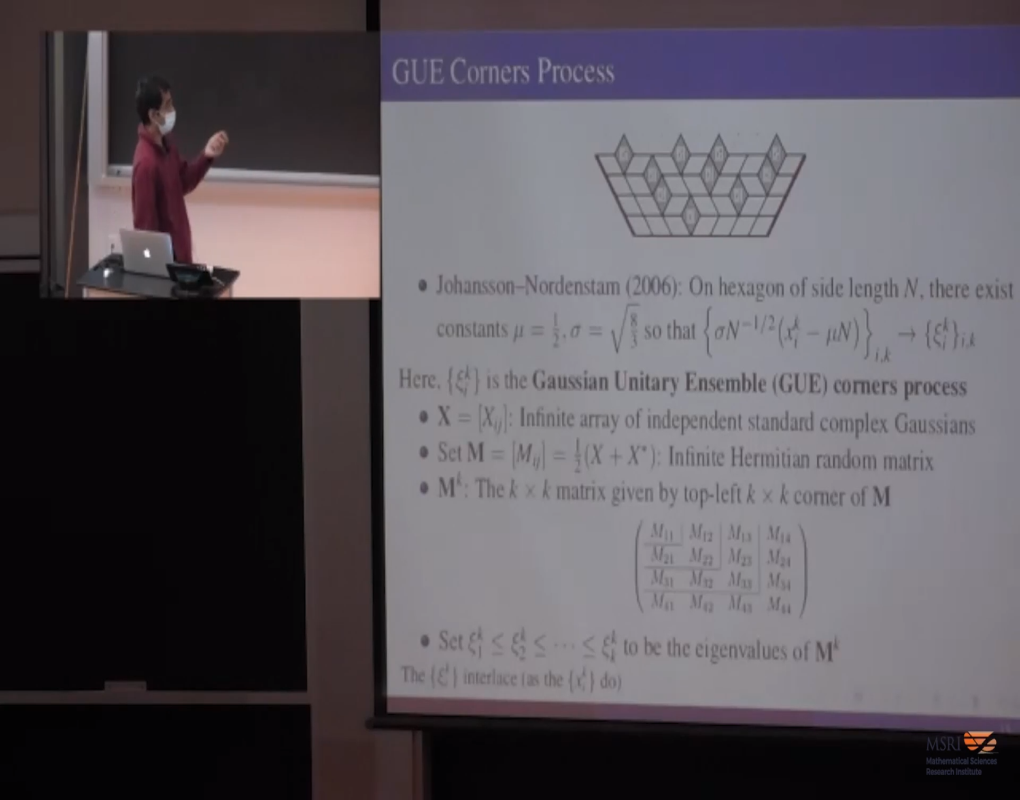Abstract
The statistical behavior of random tilings of large domains has been an intense topic of mathematical research for decades, partly since they highlight a central phenomenon in physics: local behaviors of highly correlated systems can be very sensitive to boundary conditions. Indeed, a salient feature of random tiling models is that the local densities of tiles can differ considerably in different regions of the domain, depending on the shape of the domain. Thus, a question of interest is how the shape of the domain affects the statistics of a random tiling. A general prediction in this context is that, while the family of possible domains is infinite-dimensional, the limiting statistics should only depend on a few parameters. In this talk, we will explain this universality phenomenon in the context of random lozenge tilings (equivalently, the dimer model on the hexagonal lattice). Various possible limiting local statistics can arise, depending on whether one probes the bulk of the domain; the edge of a facet; or the boundary of the domain. We will describe recent works that verify the universality of these statistics in each of these regimes.
These results are based on join works with Vadim Gorin and Jiaoyang Huang.
